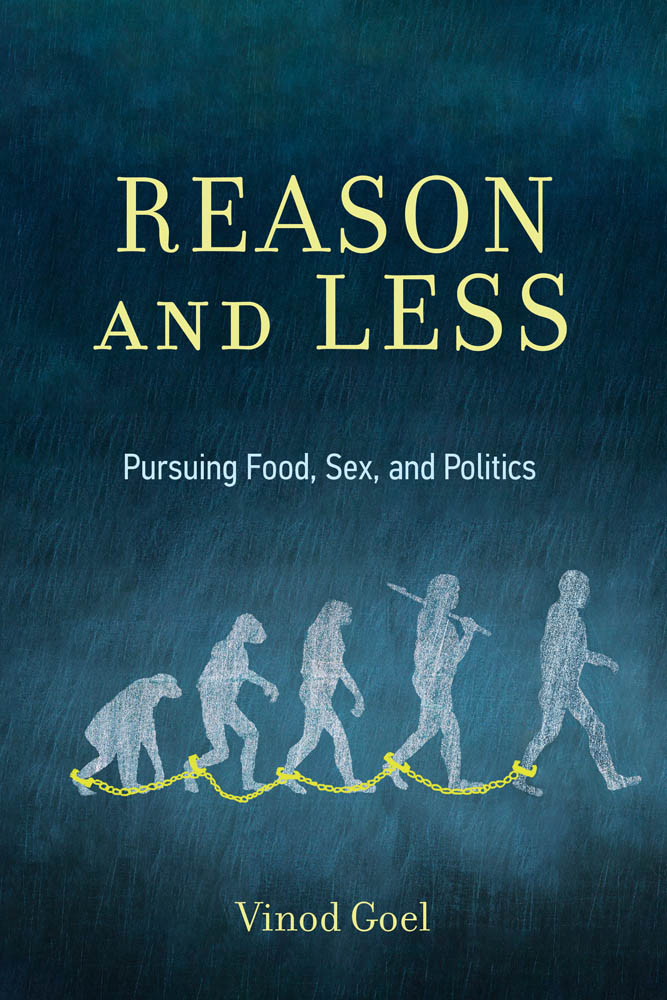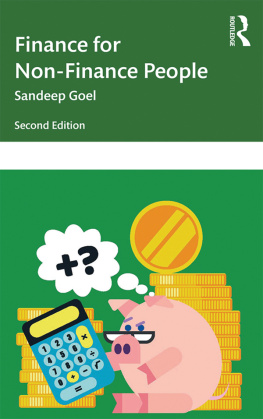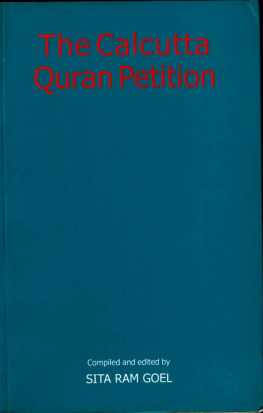Contents
Guide
Pagebreaks of the print version

Reason and Less
Pursuing Food, Sex, and Politics
Vinod Goel
The MIT Press
Cambridge, Massachusetts
London, England
2022 Massachusetts Institute of Technology
All rights reserved. No part of this book may be reproduced in any form by any electronic or mechanical means (including photocopying, recording, or information storage and retrieval) without permission in writing from the publisher.
The MIT Press would like to thank the anonymous peer reviewers who provided comments on drafts of this book. The generous work of academic experts is essential for establishing the authority and quality of our publications. We acknowledge with gratitude the contributions of these otherwise uncredited readers.
Library of Congress Cataloging-in-Publication Data
Names: Goel, Vinod, author.
Title: Reason and less : pursuing food, sex, and politics / Vinod Goel.
Description: Cambridge, Massachusetts : The MIT Press, [2022] | Includes bibliographical references and index.
Identifiers: LCCN 2021017752 | ISBN 9780262045476 (paperback)
Subjects: LCSH: Decision making. | Reasoning. | Logic. | Cognitive neuroscience.
Classification: LCC BF448 .G64 2022 | DDC 153.4/3dc23
LC record available at https://lccn.loc.gov/2021017752
d_r0
To the memory of my mother and father
For Kalpna, Amit, and Natasha, who taught me there is often less to life than reason
Contents
List of Figures
An example of the rational mind at work using a hypothetical reconstruction of the US decision to invade Iraq in 2003. Each subgoal follows coherently from the preceding goal or subgoal plus beliefs, eventually resulting in an action. The integration of goals and subgoals plus beliefs via the coherence relation is the nexus of the reasoning step.
Simple decision tree and utility function. One might model the decision to invade or make a deal as follows. The chances of a successful invasion are 0.75, while the chances of failure are 0.25. The chances of a successful negotiation are 0.15, while the chances of failure are 0.85. The value assigned to both the successful invasion and successful negotiation is + 100. The value assigned to a failed invasion and failed negotiation is 100. Based on these values, the utility of invasion is + 0.5 and the utility of negotiation is 0.7 (utility = (probabilityoutcome valueoutcome)). Notice that decision theory provides no guidelines for assigning probabilities of outcomes and the value of the outcomes, but once these numbers are (magically) assigned, simple probability theory allows us to coherently calculate expected utility. The rational choice is the one with the highest expected utility.
The carbon bathtub analogy. If more water is dripping into the bathtub than is leaving via the drain, no matter how small the difference, the coherent conclusion is that the bathtub will eventually overflow. This is an example of a basic, intuitive coherency judgment. If one fails to acknowledge it (in good faith), it is not clear what more can be said to change ones mind. This would constitute a cognitive failure in detecting coherency.
A monosynaptic reflex arc. The sensory input (tapping) generates the motor response directly through a monosynaptic reflex arc. There are no intervening neurons between the sensory nerves communicating the tapping signal from the quadricep muscles back to the spinal cord, and the motor neurons from the spinal cord innervating quadricep muscles. The figure also shows the presence of an inhibitory interneuron that serves to relax the hamstring muscle. Drawing by Aldona Griskeviciene.
Control of respiration by the autonomic system, in part by a series of reflex actions with control centers in brain stem structures.
Homeostatic control of blood glucose levels by the autonomic system.
The Lorenz hydraulic or energy model of instincts. Adapted from Lorenz (1950).
Differentiation of sex and gender in mammals.
(a) All animals can make contiguity-based associations. (b) Only humans can make similarity-based associations. (c) Similarity-based associations can lead to reasoning. Based on drawings by William James (1878).
Fragment of a semantic network representation of dog.
(a) The biology of neural networks. (b) Axiomatization of neural networks: converting a biological problem into a computational problem. (c) Training of neural networks. Modeled after Rumelhart and McClelland (1986).
A transitive reasoning schema modeled after Halford, Wilson, & Phillips (2010).
Wason card selection task.
Example of a phylogenetic tree. Some animal illustrations are reproduced from Angel Cabrera (1919).
Simplified phylogenetic tree of brain development across reptiles, birds, and mammals. There are five things to note: (1) the brain stem, cerebellum, and thalamic structures appear early and are conserved across the evolutionary tree; (2) the telencephalon begins to differentiate into the pallium and subpallium with reptiles; (3) the subpallium evolves into the basal ganglia structure of mammalian brains; (4) the pallium starts as a largely undifferentiated structure in reptiles and becomes more differentiated in birds and even more fully differentiated into subcortical and cortical structures in mammals; and (5) in mammals, the pallium becomes the six-layered neocortex.
ADVR = anterior dorsal ventricular ridge; Ac = accumbens; B = basorostralis; Cd = caudate; E = entopallium; GP = globus pallidus, internal (i) and external (e) segments; HA = hyperpallium apicale; Hp = hippocampus; IHA = interstitial hyperpallium apicale; L2 = field L2; MD = dorsal mesopallium; MV = ventral mesopallium; OB = olfactory bulb; PDVR = posterior dorsal ventricular ridge; Pt = putamen. For birds, there is some uncertainty as to whether the MD is hyperpallium densocellulare (HD) or a separate structure. Reproduced with permission (with slight modifications) from Jarvis (2009).
The major components of the human brain starting with (a) brain stem and cerebellum, (b) diencephalon (thalamus and hypothalamus), (c) subcortical structures, including basal ganglia nuclei, hippocampus, and amygdala, (d) and cerebral cortex. Figure drawn by Brooklyn McKinley.
Brain systems are hierarchically organized and tethered. This example from the motor system highlights interconnections and coordination across four levels of brain structures (brain stem and cerebellum, thalamus, subcortical structures, and cerebral cortex). Most brain functions require such system integration and coordination. Notice that information flows both ways, top-down and bottom-up. Figure modeled after information in Sherwood and Kell (2009).
Brain stem, diencephalon, and subcortical systems involved in aggression, dominance, and social attachment behaviors in rodents. AMY = amygdala; AOB = accessory olfactory bulb; BNST = bed nucleus of the stria terminalis; DRN = dorsal raphe nucleus; HPC = hippocampus; HyP = hypothalamus; IL = infralimbic division of the mPFC; LHb = lateral habenula; LS = lateral septum; MeA = medial amygdala; MOB = main olfactory bulb; MOE = main olfactory epithelium; mPFC = medial prefrontal cortex; NAc = nucleus accumbens; OFC = orbitofrontal cortex; PAG = periaqueductal gray; PL = prelimbic division of the mPFC; VMHv1 = ventrolateral subdivision of the ventromedial hypothalamus; VNO = vomeronasal organ; VTA = ventral tegmental area. Reproduced with permission from Ko (2017).
Developmental timeline of various brain structures in rhesus monkeys is consistent with the old adage ontogeny recapitulates phylogeny. Neurogenesis and maturation occur from the inside out, beginning with the brain stem (monoamine cells), diencephalon, and subcortical structures and then cortical structures. E indicates embryonic days. Gestation period is 165 days. Data compiled and graphed by Selemon and Zecevic (2015) from studies by Rakic and colleagues. Reproduced with permission.











